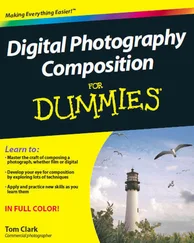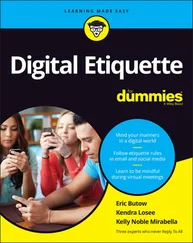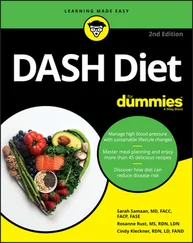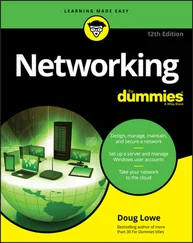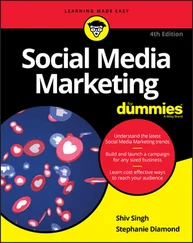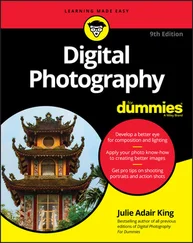A “little victory” is something that helps inspire your leads and gives them confidence that they can accomplish whatever solution or goal you’re offering, as well as the confidence that your product or service will help to get them there. A little victory gives your prospects hope and a taste of achieving the whole thing — of making it to the other side of the tunnel, so to speak. Keep in mind that little victories are usually quick to achieve and help deliver value to your customer.
For instance, if you’re in the fitness world, you can offer a discounted, seven-day introductory class as a deep-discount offer. When describing the offer to potential buyers, you state that completing this first seven days is the hardest part of your program — because getting started is often the hardest part. If they can get through your seven-day program, they’ll know that the toughest part is behind them.
As you go through your products and services to determine which will make the best deep-discount offer, ask yourself what little victory this product or service can provide your customers. Brainstorm how it will give them hope, how it will help to get them over the hump of self-doubt. You should help your customers see that success is possible not only for the smiling customers in your testimonials but also for them, personally. This helps make your offer more potent and enable you to build positive relationships with your newly acquired customers.
Filling out the deep-discount offer checklist
Previous sections talk about the various forms your deep-discount offers could take and the importance of little victories. Next, look over the five-point deep-discount offer checklist, presented in the following sections, so that you can ensure that your offer can convert leads and prospects into buyers.
Point 1: Does it lower the barrier to entry?
To start, your deep-discount offer should be low risk. The offer shouldn’t be expensive, time consuming, or difficult to understand. The best offers at this stage are often impulse buys, like the pack of gum you grab while you wait in line at the supermarket. The price of your offer depends on your market. Leads shouldn’t have to pause to consider whether they can afford your deep-discount offer; the price should remove that barrier. Again, the purpose of this offer is not profit. A good rule of thumb is to make these offers at $20 or below.
Point 2: Is the value clear?
Make your deep-discount offer easy to understand. You want to be able to quickly explain the value and entice the lead into buying. Therefore, your deep-discount offer should not be complex. Impulse buys are not complicated offers.
Point 3: Is it useful but incomplete?
 The keyword here is useful. Your deep-discount offer should not be a bait-and-switch offer. If the deep-discount offer doesn’t deliver on its promise, you’ll tarnish your relationship with that customer. You may have gained a quick sale with the deep-discount offer but lost a potential lifelong customer. This offer must be useful in its own right, but it is not the whole package.
The keyword here is useful. Your deep-discount offer should not be a bait-and-switch offer. If the deep-discount offer doesn’t deliver on its promise, you’ll tarnish your relationship with that customer. You may have gained a quick sale with the deep-discount offer but lost a potential lifelong customer. This offer must be useful in its own right, but it is not the whole package.
Point 4: Does it have a high perceived value?
As with the gated offer before it, use good design to create a deep-discount offer with a high-quality look and feel. You don’t want your new customers to feel ripped off; instead, you want them to feel as though the deep-discount offer they just bought from you was a steal.
 People don’t buy products and services online, but rather buy pictures and descriptions of products and services online. If you want to sell online, you need to employ design and copywriting that communicate the value of the products and services you’re offering.
People don’t buy products and services online, but rather buy pictures and descriptions of products and services online. If you want to sell online, you need to employ design and copywriting that communicate the value of the products and services you’re offering.
Point 5: Does it have a high actual value?
Be sure that your deep-discount offer makes good on its promise and delivers value. This situation builds trust with your new customers, and when they’re ready to buy again, they will remember the positive experience they had with you.
Discovering your deep-discount offer
The offer you use to acquire customers likely exists inside your core offer , which is a higher-priced or more complex product or service. Your core offer is often your flagship product or service. Look at your core offer and see what piece or pieces can stand on their own. What can you splinter off and still deliver value with that piece?
Here are some questions to ask to help you discover your deep-discount offer(s):
What’s the cool gadget that your market wants, but doesn’t necessarily need? What’s your impulse buy? What’s your stick of gum?
What’s the one thing everyone needs, but doesn’t necessarily want? This can be a product or service that people know they need but aren’t exactly excited about. The product may not be “sexy,” but it’s critical to a process that people engage in. For instance, if someone has a candle-making hobby, the wick may not be as fun or interesting as the colored waxes or scented oils, but it’s an essential ingredient.
What’s a valuable service that you can perform quickly and inexpensively, one that will deliver results in advance and get your foot in the door? This idea goes beyond giving someone a free quote or estimate; it gives customers a taste of how you can positively affect their lives. For example, a roofer could offer a deep discount on gutter cleaning as a deep-discount offer. After completing the job, the roofer could point out any necessary improvements that the roof or gutters need. That’s a deep-discount offer that provides value first and then gets your foot in the door.
What little victory or victories does your deep-discount offer provide? How do you help the customer overcome self-doubt?
As this chapter explains, you use ungated, gated, and deep-discount offers to acquire new customers and buyers. But when do you actually make a profit? The cost of acquiring new customers is often the most expensive one that businesses incur. After you have a buyer, asking that buyer to buy from you again makes sense. You want to turn that customer you spent so much time and money acquiring into a repeat customer.
The marketing campaigns you employ to sell more, or more often, to the leads and customers you’ve acquired are called Monetization campaigns, and these campaigns have a number of different types of offers to employ. In the following sections, we tell you how to implement and improve your monetization offers.
 Most companies are running monetization campaigns (making high-dollar and complex offers, which we discuss in Chapter 2) directed at ice-cold prospects and brand new leads. Although it would be fantastic to be profitable without needing to warm up a prospect with ungated, gated, and deep-discount offers, making that work is very difficult. The sequence of the offers you make to people is extremely critical to avoid being the business that is asking its prospects for too much, too soon.
Most companies are running monetization campaigns (making high-dollar and complex offers, which we discuss in Chapter 2) directed at ice-cold prospects and brand new leads. Although it would be fantastic to be profitable without needing to warm up a prospect with ungated, gated, and deep-discount offers, making that work is very difficult. The sequence of the offers you make to people is extremely critical to avoid being the business that is asking its prospects for too much, too soon.
Making an upsell or cross-sell offer
The first type of monetization offer we discuss is the immediate upsell, and it’s one you’re probably already familiar with even if you’ve never heard the term. An example of the immediate upsell is the famous “Do you want fries with that?” offer made at McDonald’s. Upsells offer customers more of what they already bought. The purchase they are currently making and the upsell should lead the customer to the same desired end result. In the McDonald’s example, adding fries to your order gets you a bigger meal. The cross-sell offer, on the other hand, makes an offer related to the first purchase. For example, a clothing retailer might offer dress shoes to a man who just purchased a suit.
Читать дальше
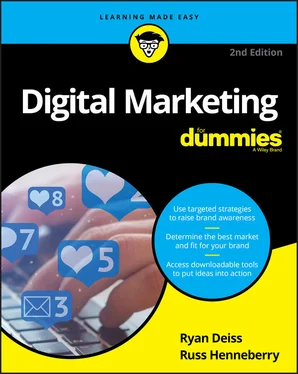
 The keyword here is useful. Your deep-discount offer should not be a bait-and-switch offer. If the deep-discount offer doesn’t deliver on its promise, you’ll tarnish your relationship with that customer. You may have gained a quick sale with the deep-discount offer but lost a potential lifelong customer. This offer must be useful in its own right, but it is not the whole package.
The keyword here is useful. Your deep-discount offer should not be a bait-and-switch offer. If the deep-discount offer doesn’t deliver on its promise, you’ll tarnish your relationship with that customer. You may have gained a quick sale with the deep-discount offer but lost a potential lifelong customer. This offer must be useful in its own right, but it is not the whole package. People don’t buy products and services online, but rather buy pictures and descriptions of products and services online. If you want to sell online, you need to employ design and copywriting that communicate the value of the products and services you’re offering.
People don’t buy products and services online, but rather buy pictures and descriptions of products and services online. If you want to sell online, you need to employ design and copywriting that communicate the value of the products and services you’re offering.